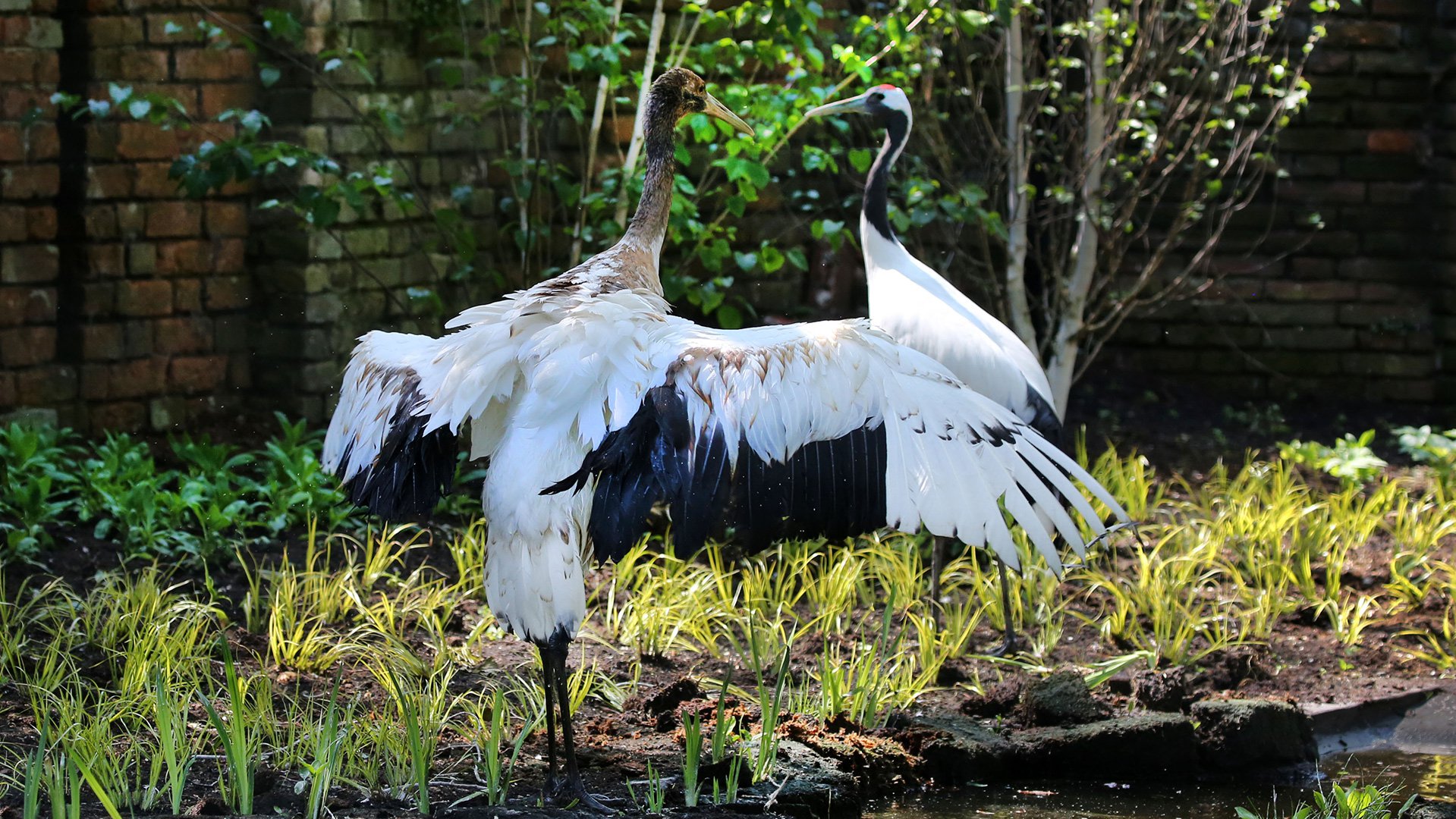
Red-crowned cranes dance at ARTIS
Old Ruin now new home for Japanese red-crowned cranes and snowy owls – May 28, 2019
The new home for the snowy owls and Japanese red-crowned cranes at ARTIS just opened with a performance by the Junior Company of the Dutch National Ballet. The historic Ruin from 1921 has been restored and is the centre of the enclosure.
The snowy owls have already built a nest and are sitting on an egg. The Japanese red-crowned crane couple are exploring the marshy side of the enclosure on their long legs. These elegant birds are renowned for their tremendous cultural significance – in everything from stories to kung fu – and their dance. This inspired the dance performed by the Junior Company of the Dutch National Ballet during the opening. Cranes dance with each other starting when they are still chicks, first as a way to play and later to bond with a partner. Silhouettes of cranes next to the enclosure encourage visitors to follow their example and bend their necks, jump, spread their arms like wings and perform pirouettes.
Natural needs
The new enclosure is designed to meet the needs of the Japanese red-crowned cranes and snowy owls as much as possible. The vegetation planted on both sides of the enclosure was chosen according to the two species' natural habitats. The rocky side of the enclosure offers the snowy owls plenty of options for roosting, nesting and flying. A swampy area was created for the Japanese red-crowned cranes with a moat around the Ruin and peat on the banks. The cranes wade around here, searching with their long beaks for insects, plants and aquatic animals. The diversity of the vegetation reflects the diversity in the natural habitat of the birds.
ARTIS is creating more space for animals and plants and for education and cultural heritage. The renovation once again shows the historic Ruin to its full advantage. According to local lore, the stones in the Ruin are from the medieval castle of Brederode in Velsen and were personally transported to ARTIS by its livestock inspector at the time, Dr Portielje.
Fidelity, good fortune and a long life
The crane appeals to the imagination on account of its elegant appearance and dance movements. In Japanese and Chinese culture, the crane symbolises fidelity, good fortune and a long life. There are dozens of fairy tales and stories about cranes and they are widely represented in kimono designs and paintings. Cranes dance to court each other. Once a bond has been established between a couple, the pair stays together for the rest of their lives. The dance movements of Japanese red-crowned cranes have been reflected in kung fu stances for centuries. During the opening of the new enclosure, the Junior Company of the Dutch National Ballet danced at ARTIS for the first time. The movements of the dance and the atmosphere evoked those of the Japanese red-crowned cranes and their new enclosure. The black silhouettes of cranes next to the enclosure encourage visitors to likewise spread their wings and dance like a crane.
Habitat loss
Snowy owls and Japanese red-crowned cranes live in the northern regions of the world. The Japanese red-crowned crane lives in Russia, China and Japan. The snowy owl lives on the tundra around the North Pole. Snowy owls are occasionally observed in the Netherlands, too. As yet, there are 1,800 adult Japanese red-crowned cranes living in the wild. They are listed as endangered due to habitat loss caused by human activity. The status of the snowy owl in the wild is vulnerable, with 28,000 birds still living in the wild worldwide. Climate change is causing their habitat to shift and shrink.
